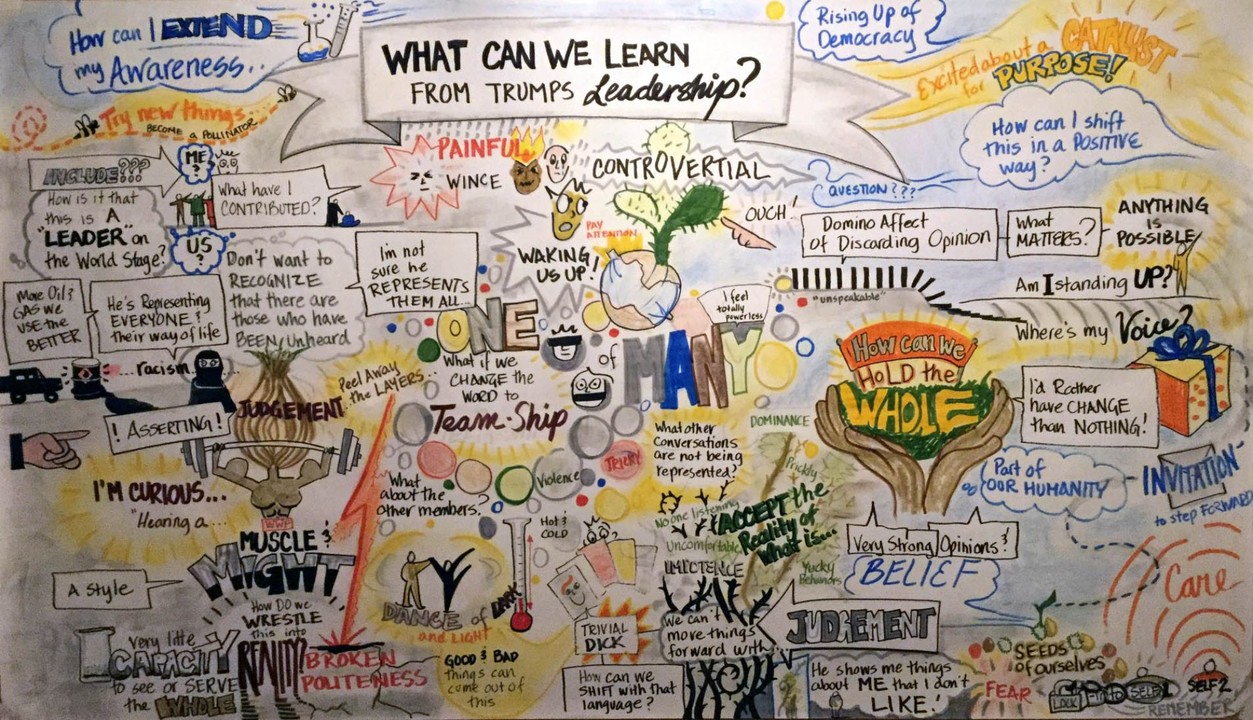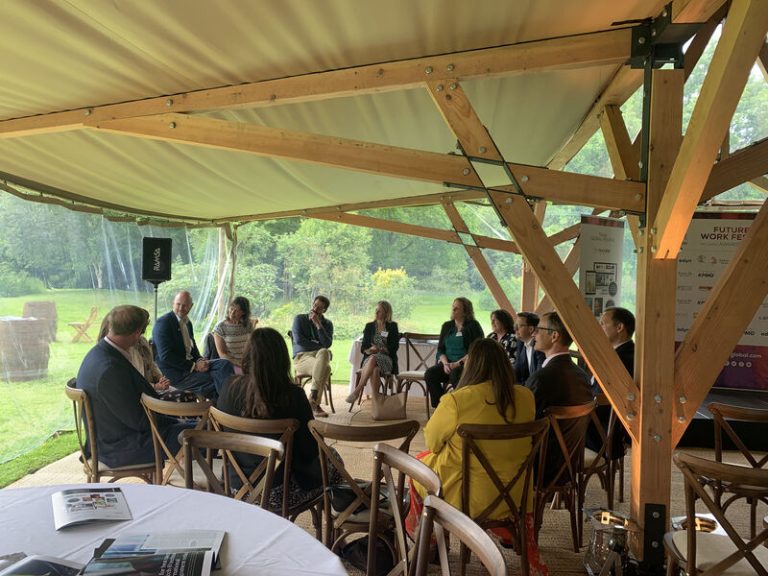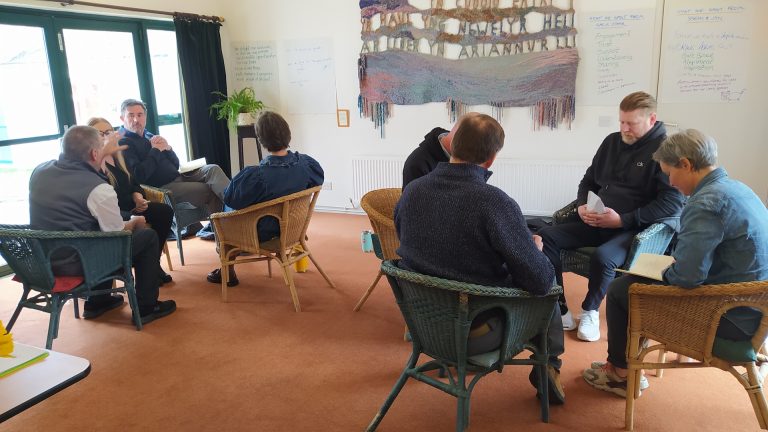
What can we learn from Trump’s leadership?
How can I draw on the intelligence of the people around me to improve decisions? How can I ‘read the room’ and disrupt ‘talking nice’, ‘talking tough’ or not talking at all? What can I do to change how my team talks together so that thinking together become possible?
Leaders who want to increase innovation and productivity are asking these questions more and more. They recognize that whether they want to create an exciting vision, implement a new strategy, or make a better decision, it is by talking – and thinking – together that a better future emerges. In our rapidly changing and digitally connected world, the need to move forward in alignment with others has never been greater.
Changing our conversation is not, however, as simple as it sounds. Poor communication and ‘silo working’ costs organizations millions of pounds every day. Rivalry between departments, lack of trust in teams and unresolved conflicts between individuals all undermine performance.
From conflict to thinking together
Increasingly, leadership is about mobilizing collective potential. When we change our conversations – the quality of the listening, the authenticity of the speaking and the diversity of who’s in the room – new solutions to problems emerge.
At a recent leadership programme I co-led, we spent some time as a group surfacing the ‘hot topics’ to discuss together. These are topics that:
- Are engaging and energizing for everyone present.
- Generate diversity of opinion as there are often many dimensions to consider.
- Involve uncertainty, confusion or disagreement about how to understand or resolve the issue.
As a group we decided to explore, “What can we learn from Trump’s leadership?” It was a lively and thoughtful discussion. The colourful graphic above, created by the wonderful visual facilitator Susi Watson, captures some of the dimensions. People held points of view that were so different, the conversation almost became polarised. However, we hung in there together. We listened with respect as we explored each other’s thinking and sensed the larger issues at play.
After an initial exchange of different views, we thought together about how Trump’s leadership had been catalytic. Whether people were supporters of his politics or not, our conversation covered the deeper territory of what we could learn about us as a society. Our collective question became: What were the social conditions that gave rise to Trump’s election? The sharing was humbling and the atmosphere thoughtful. We each left the conversation enriched by what we had learnt.
Shortly afterwards when I read Otto Scharmer’s latest blog on Huffington Post about exactly the same topic, it deepened my learning further. When we get beyond our reactivity and into reflection, there is much we can learn together.
Catalytic conversations
‘Hot topics’ are, by their very nature, difficult to discuss. As individuals start to air their true views, the energy in the room goes up. If the ‘container’ or holding environment isn’t strong enough (see my previous post), the conversation soon slips back into unproductive politeness.
Another way is, however, possible. Sitting with the discomfort of diverse viewpoints requires both a shift in mindset and a change in behaviour. In such high-energy moments, it helps the whole room if leaders see conflict as ‘creative tension’. Different perspectives are the grist that we need to catalyze a deeper conversation. Holding this possibility in mind enables a group to get beyond superficial talk and into a more ‘real’, meaningful discussion.
New leadership behaviours
Asking questions instead of giving (yet another) opinion helps to create a more expansive space in which people can think together. When we bring our curiosity, rather than our certainties, to a conversation, we create space for new thinking to emerge. For example we can:
- Draw out others’ thinking by asking, “What assumptions are you making?”
- Ask for more context by inquiring, “What examples do you have?”
- Check our own understanding by saying, “Let me try to summarise what I think I’m hearing you saying.”
Encouraging others to share their thinking in more skillful ways gives a route through potential breakdown. If a leader is able to use ‘inquiry’ and not just ‘advocacy’, thinking together becomes possible. It is from the fusion of different perspectives that new insights emerge.
The benefits of thinking together
There is an art – and science – to holding powerful meeting spaces where people do their best thinking. Research, including by Losada and Heathy (2004), shows that better conversations lead to numerous business benefits including:
- Improved performance through increased collaboration and greater trust.
- Greater profitability, employee engagement and customer satisfaction.
- Enhanced wellbeing and higher motivation amongst staff and other stakeholders.
Creating the conditions for catalytic conversations that mobilise energy for action is a key leadership skill. Expanding your repertoire of behaviours can pay huge dividends. A conversation, where the creative tension of different points of view is held, can become an opening through which new thinking flows. When diverse stakeholders think and talk together enhanced innovation, problem solving and decision-making across a whole system become possible.
Want to know more?
The 2-day ‘Unlocking the Power of Thinking Together’ programme will run again on 17th – 18th April 2018. Details will be published shortly. Please contact me if you’d like more information in the meantime.






